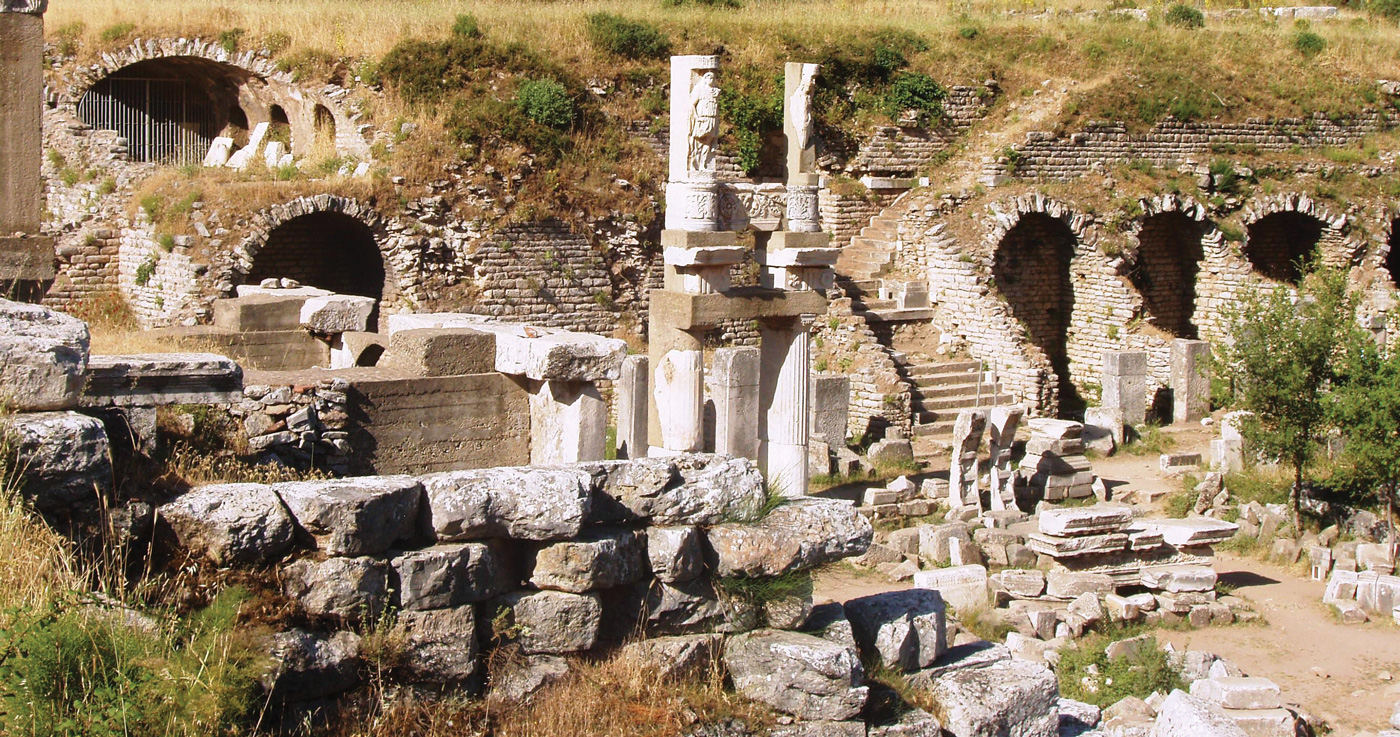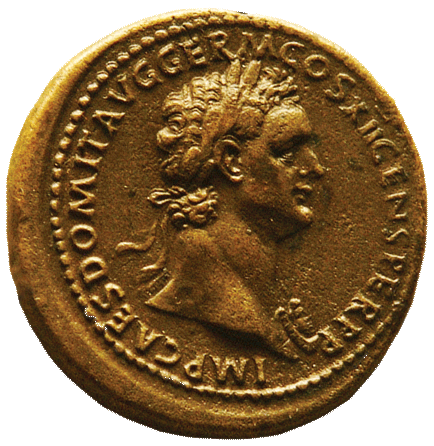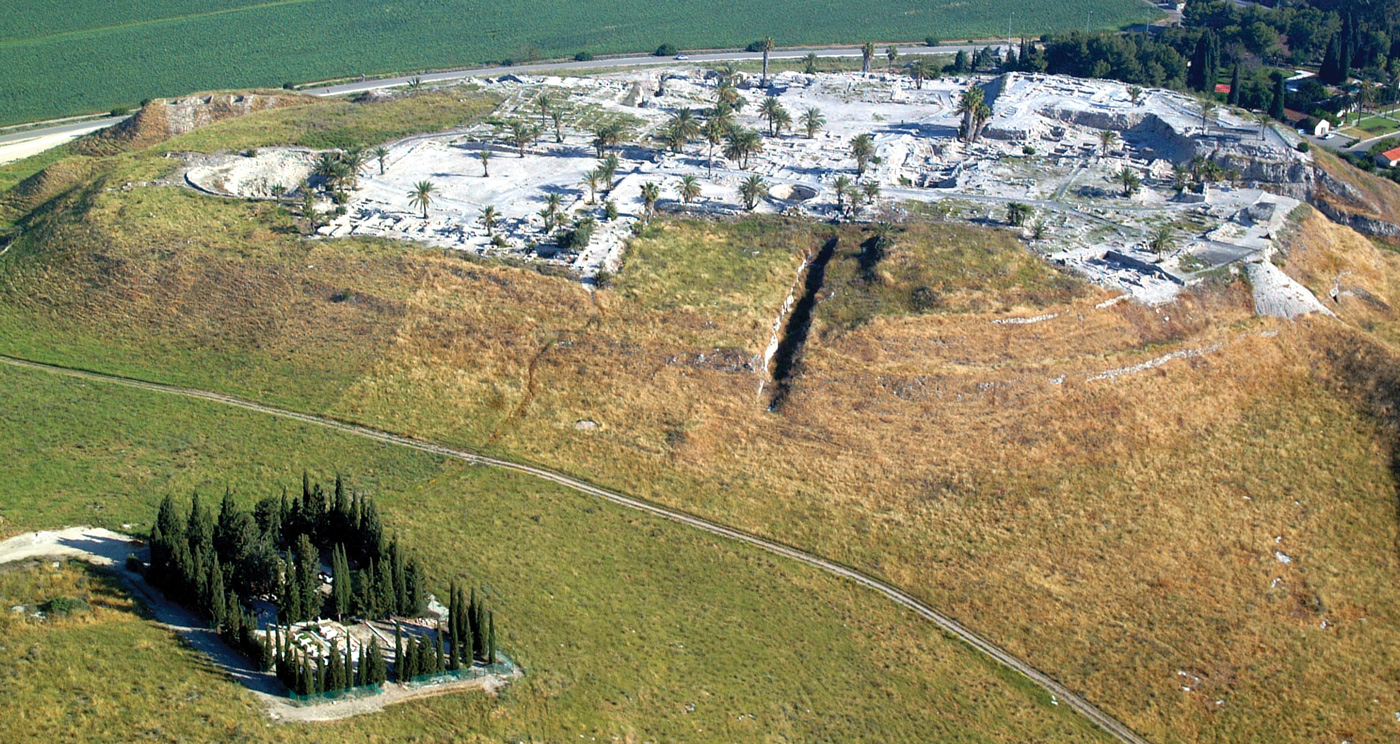Revelation
The Transforming Vision
Central Teaching
Revelation presents the final chapter in God’s story of salvation: he defeats evil, reverses the curse of sin, restores creation, and lives forever among his people.
Memory Verse

Remains of the Temple of Flavian Sebastoi (emperors of the Flavian family) in Ephesus
Setting
The author of Revelation identifies himself as John, the servant of Jesus Christ (1:1, 4). There is some debate as to the identity of this John, but there is reliable evidence to conclude that this is the apostle John, who also wrote the Gospel of John. Banished to the island of Patmos for proclaiming the message about Jesus (1:9), John receives the heavenly vision that is Revelation on the Lord’s day, or day of worship. His primary audience is the seven churches of Asia Minor mentioned in Revelation 2–3.
Revelation was written either shortly after the death of Nero (AD 68–69) or near the end of Domitian’s reign (AD 95). Most scholars favor the later date, when persecution was threatening to spread across the Roman Empire. The imperial cult (i.e., the worship of the Roman emperor as Lord) was a powerful force because it united religious, political, social, and economic elements into a single force. The earliest and most basic Christian confession was “Jesus is Lord,” and when Christians followed Jesus rather than Caesar, they were considered disloyal to the state and were subject to persecution. Some Christians, however, chose to compromise their belief rather than stay faithful.

A coin bearing the image of Emperor Domitian
Message
Revelation addresses a situation in which pagan political power formed a partnership with false religion. Those who claimed to follow Christ faced mounting pressure to conform to this ungodly partnership at the expense of loyalty to Christ. The overall purpose of Revelation is to comfort those who are facing persecution and to warn those who are compromising by adhering to the world system.
To send this message, Revelation uses strange images and symbols as it combines the literary types of letter, prophecy, and apocalyptic. This picture language creates a symbolic world for the believers to enter as they hear the book. In doing so, they gain a heavenly perspective on current events; they see reality differently. While it may seem that Caesar is Lord, Revelation shows that God is in control of history and that Jesus is Lord. God will win in the end. As a result, believers are strongly encouraged to persevere in faithfulness to Jesus.
Outline
Interesting Features
- Revelation features three different literary types (genres): letter, prophecy, and apocalyptic. For this reason, it is a challenge to interpret.
- The book has much in common with Ezekiel, Daniel, and Zechariah, each of which contains similar prophetic-apocalyptic elements.
- Revelation alludes to the Old Testament more than any other New Testament book.

The “mountain of Megiddo” in Israel becomes a symbol for the final battle between God and the forces of evil (i.e., Armageddon in Rev. 16:12–16).
Connections
Revelation reminds us that God is sovereign and that Jesus is Lord. No matter how things appear in our nation or in our world, God is still on his throne. Our hope is that Jesus will return again to set things right. In the end, God wins! The book also tells us to expect opposition in this world. Even now, Christians throughout the world are being persecuted. We know that God will protect us spiritually, but we are not exempt from physical tribulation (cf. John 16:33). Revelation warns us against compromising our faith by adhering to the world system and calls us to overcome or endure in faithfulness to Jesus. Our present sufferings are not worth comparing to the glorious future God has in store for his people in the new creation.